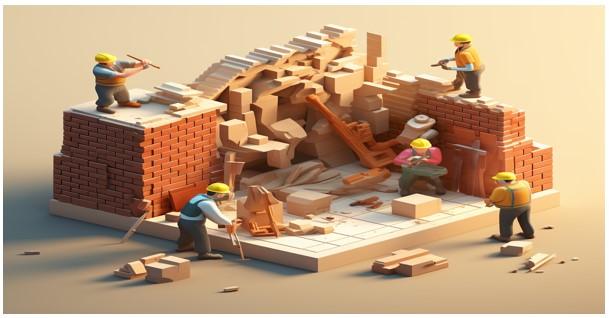The UK construction industry relies on a variety of building materials to create robust, aesthetically pleasing, and sustainable structures. The choice of materials often depends on factors such as local availability, environmental impact, cost, and the specific requirements of the project. Here are some of the most popular building materials used by UK builders:
- Brick
Bricks are one of the most traditional building materials used by the builders Bexleyheath, renowned for their durability, thermal performance, and aesthetic appeal. They are typically made from clay and come in various sizes, colors, and textures. Bricks are favored for their fire resistance, sound insulation properties, and ability to withstand harsh weather conditions. They are commonly used in the construction of homes, schools, and commercial buildings.
- Concrete
Concrete is a versatile and widely used material in the UK construction industry. It is made from a mixture of cement, water, sand, and gravel, and can be molded into various shapes and sizes. Concrete is prized for its strength, durability, and low maintenance. It is used in the construction of foundations, walls, floors, and roofs, as well as in infrastructure projects like bridges, tunnels, and roads.
- Timber
Timber, or wood, is a popular choice for both structural and decorative purposes. It is a renewable resource that offers a warm and natural aesthetic. Different types of timber, such as oak, pine, and cedar, are used for framing, flooring, roofing, and cladding. Timber is also favored for its relatively low carbon footprint and energy efficiency. However, it requires proper treatment and maintenance to prevent issues like rot and pest infestation.
- Steel
Steel is an essential material for modern construction, known for its high strength-to-weight ratio and versatility. It is used in the construction of skyscrapers, industrial buildings, bridges, and other large structures. Steel frames, beams, and reinforcements provide structural integrity and allow for innovative architectural designs. The material is also recyclable, making it a sustainable choice.
- Glass
Glass is increasingly used in contemporary UK architecture, providing natural light, aesthetic appeal, and energy efficiency. Modern advancements in glass technology have led to the development of double and triple glazing, which enhance thermal insulation and reduce energy consumption. Glass is commonly used in windows, doors, facades, and interior partitions.
- Stone
Natural stone has been used in UK construction for centuries, admired for its beauty, durability, and timeless appeal. Types of stone like limestone, sandstone, granite, and slate are used for building facades, flooring, and landscaping. Stone is resistant to weathering and provides excellent thermal mass, which helps regulate indoor temperatures.
- Insulation Materials
Insulation is crucial for energy-efficient buildings, and builders Chislehurst use a variety of materials to achieve this. Common insulation materials include fiberglass, mineral wool, foam boards, and reflective insulation. These materials help reduce heat loss, lower energy bills, and improve the comfort of living spaces.
- Plastic and Composites
Plastic and composite materials are used for various building components such as pipes, window frames, and roofing membranes. These materials are lightweight, durable, and resistant to corrosion. Advances in composite technology have led to the creation of materials that combine the best properties of different substances, enhancing performance and sustainability.
- Recycled and Sustainable Materials
There is a growing emphasis on sustainability in the UK construction industry. Builders Lewisham are increasingly using recycled materials, such as reclaimed wood and recycled metal, as well as innovative sustainable materials like bamboo, hempcrete, and recycled plastic composites. These materials reduce environmental impact and promote a circular economy.
Conclusion
The choice of builders Bromley for the building material is diverse, driven by factors such as performance, cost, sustainability, and aesthetic considerations. As the construction industry continues to evolve, there is a growing focus on sustainable practices and materials that minimize environmental impact while meeting the demands of modern architecture and infrastructure.
